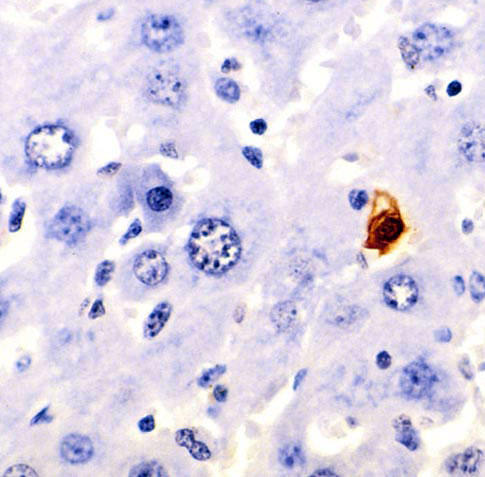P Bhoopathi, N Lee, A Pradhan, X Shen, S Das, D Sarkar, L Emdad, P Fisher (2016)
mda-7/IL-24 Induces Cell Death in Neuroblastoma
through a Novel Mechanism Involving AIF and ATM
Cancer Research, June 2016 76:12
mda-7/IL-24 Induces Cell Death in Neuroblastoma
through a Novel Mechanism Involving AIF and ATM
Cancer Research, June 2016 76:12
(Translated by Krishna Karamsetty)
Support: TUNEL Assay
|
When a cell undergoes a programmed death, the DNA material in the nucleusThe central and most important part of a cell. Houses the DNA of the cell gets cut by an enzyme. As more and more of these DNA strands get clipped, an accumulation of DNA fragments happens inside the cell. When all of these dead cells and DNA fragments get collected into a lysateA collection of dead cells, the TUNEL assay tags these broken ends with a fluorescent which will later allow the scientists to detect cell death.
|
|
|
|
|
|
These cells are tagged by a specialized enzyme called TdT. TdT catalyzes the attachment of nucleotides or building blocks of DNA to the cut ends of the DNA. As it catalyzes these reactions, TdT adds the fluorescent to the ends which can later be detected. In this article, when the DNA of neuroblastoma cells is cut by the process of cell death caused by MDA-7, TdT is added to the cells to tag the cut DNA. Remember that these cells aren’t dead just yet, but are in the process of dying. The cells are put through a fluorescent microscope which detects the fluorescent tag left by TdT. The fluorescent microscope creates a picture of all the dying cells. Since MDA-7 started the process of cell death by cutting the DNA strands, TdT tags these strands. When the cells are put through the microscope, it shows that the virus has done its job of infecting the cells.
|

Mouse liver showing an apoptotic cell stained with TUNEL
|
References
- JoVE. Determining the Density of a Solid and Liquid | Protocol, www.jove.com/science-education/5651/the-tunel-assay..